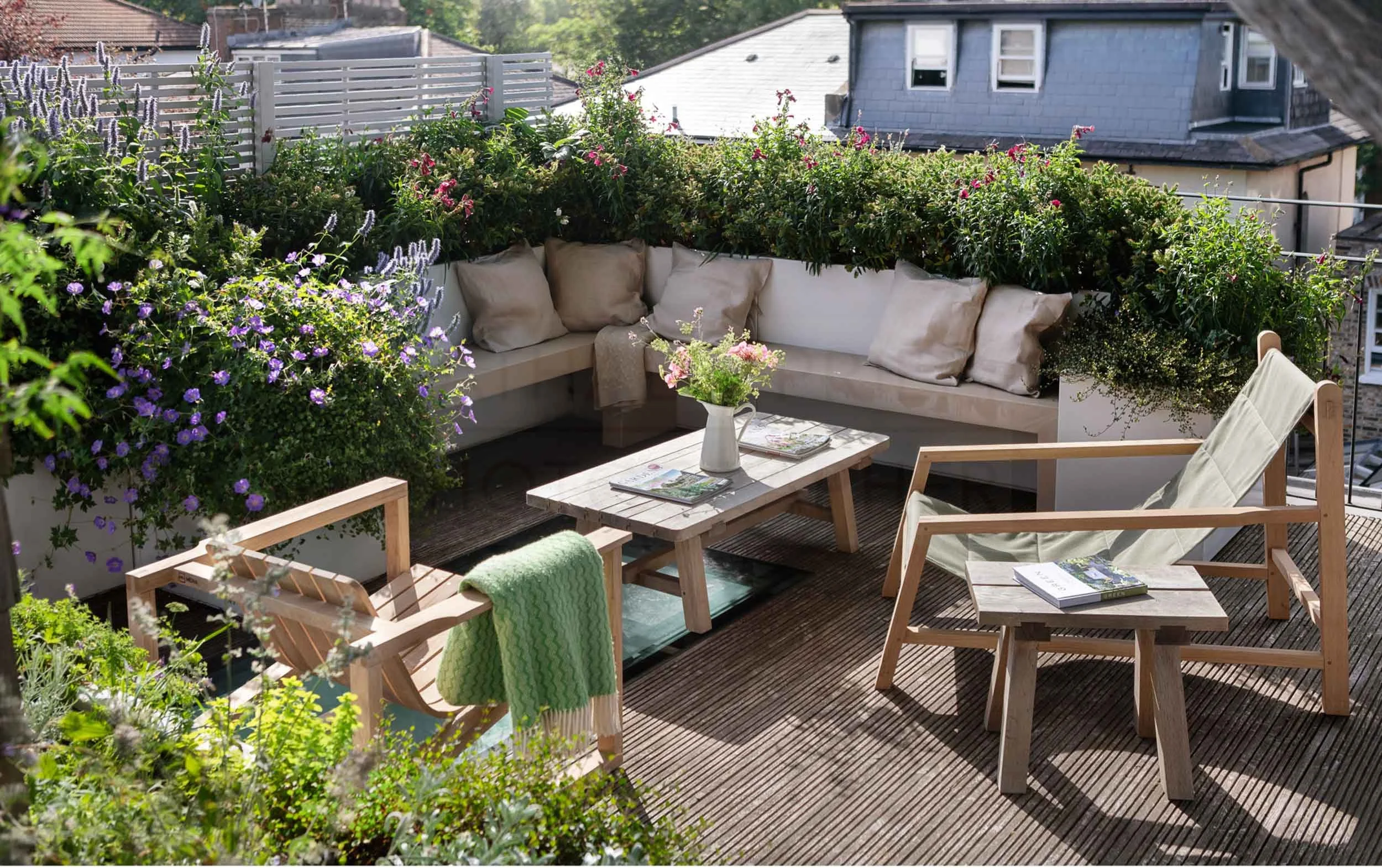A useful checklist if you are thinking of designing a rooftop garden
If you live in the city and don’t have the option of a garden adjoining your property, not all is lost. You might still be able to maximise unused outdoor roof spaces. Roof terraces are amongst the most wonderful outdoor spaces to enjoy. They offer fantastic views and, if you’re lucky, much-coveted privacy. They can add at least 12% to the value of your property and are a great way of making use of unused space. There are many reasons why having an outdoor space is so important, especially in the city, but the real question is, can you build one?
Planning permission for roof terraces
Roof terraces do not come under permitted development rights so you will have to go through a full planning application. Here are a few things to consider before you submit your application.
It is important to think about viewpoints, particularly when it comes to overlooking your neighbours. Limiting any overlooking aspects will improve the chances of the planning being approved. There are a number of ways to achieve this, including the height of the parameter wall.
Consider also overshadowing of neighbours. No one will appreciate having natural light blocked to their property. Using light permeable materials such as opaque glass or wooden trellises is often key to enabling this.
Safety is a critical factor when considering a roof terrace. The height of the parameter wall must be a minimum of 1100mm high and preferably offset from the edge.
Make sure you inform the planning authorities if any neighbouring properties have roof terraces. This will considerably help your application.
A waterproof membrane seals the roof while the wall height is further extended by using fibreglass planters secured to the parapet wall with vertical metal poles.
Essential factors to consider when planning a rooftop garden
Once you have your planning granted here are some essential factors to consider:
Find out how much weight the roof can take – large containers full of compost, plants and trees weigh a lot! Once you have added people, paving/decking and furniture it quickly adds up. Employing a chartered surveyor is a good investment from the outset.
Place containers around the perimeter over load-bearing walls and joists.
Add a suspended floor to direct the weight to the edges.
Remember, parameter walls, steel railings or glass screens need to be at least 1100mm high to meet safety standards.
Add a lightweight drainage material such as Leca granules to the base of planters and pots to aid drainage and reduce weight.
Choose a lightweight soil/compost mix, suitable for roof terraces.
Glass balustrade encloses the space allowing light to permeate.
10 things to consider when designing a rooftop garden
Designing your roof terrace is not dis-similar to designing a garden on the ground; however, there is increased exposure to sun, wind and rain. It is critical to consider this very carefully in order to minimise over-exposure to these elements.
Try to create zoned areas to break up the wind factor. Roof terraces will feel a lot windier than at ground level so add windbreaks such as trees to create natural screening. Pinus mugo is a very wind-resistant pine that will help create sheltered nooks.
Screening and trellis will require extra support to withstand the wind. As well as fixings to the parapet wall, additional fixings to the ground may be necessary. Ensure the waterproof membrane is not undermined during the process.
When selecting screening or trellis ensure the panels are slatted or partially open to allow airflow in order to avoid a ‘sail’ effect.
Include a shaded space to retreat to. A pergola or sail shade will give you welcome relief from the increased light levels.
Prevent containers from drying out in windy conditions and make sure they have a substantial depth and width.
Fibreglass planters are a great option. They are lightweight and will prevent the soil from drying out. Try to avoid terracotta, which is heavy and will dry out quickly.
Choose plants that withstand harsher conditions, such as pines and grasses. Look for Mediterranean plants that are more drought, wind and sun tolerant. Think of plants like Olive, Eucalyptus and Rosemary and the natural conditions they thrive in.
Grey-leafed plants such as Lavender, Rosemary and Convovulous are ideal for a rooftop setting. The silver-leafed foliage reflects sunlight and helps to trap moisture around the plant tissue.
Adding a drip feed irrigation system ensures your plants get just the right amount of water
Containers should be raised off the ground and excess water should flow directly to a drainpipe outlet to avoid them getting waterlogged.
Careful planning and preparation will pay off. Once you have considered all of these options you will have peace of mind knowing that you have created a safe and sustainable setting to enjoy the evening sunsets while sipping your favourite cocktail!
Raising the planting height will mutually benefit you and your neighbours by adding privacy.
Mediterranean planting including, silver leafed Convolvulus and Verbina bonariensis ‘Lollipop’.
The seating is zoned to shelter from the wind and adds privacy.






